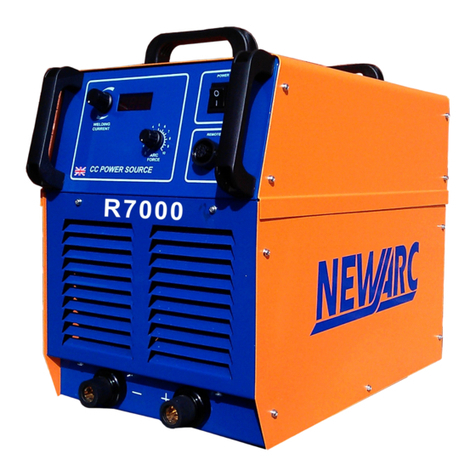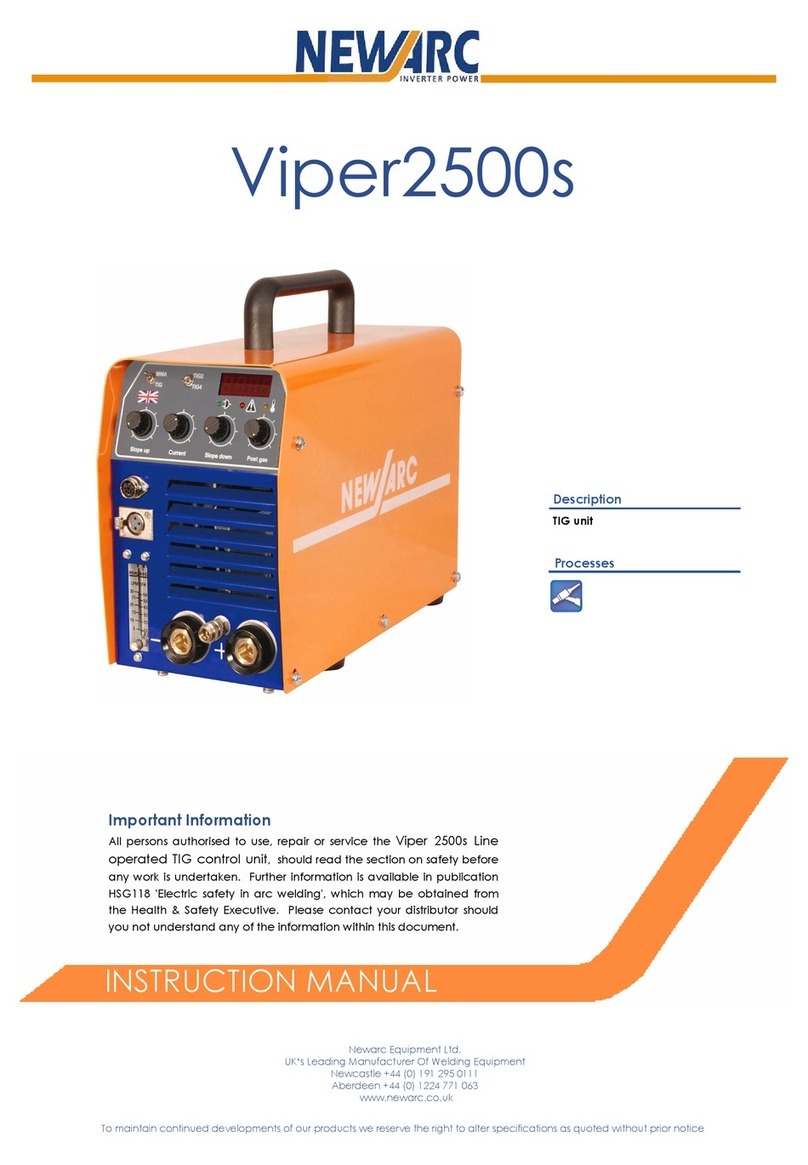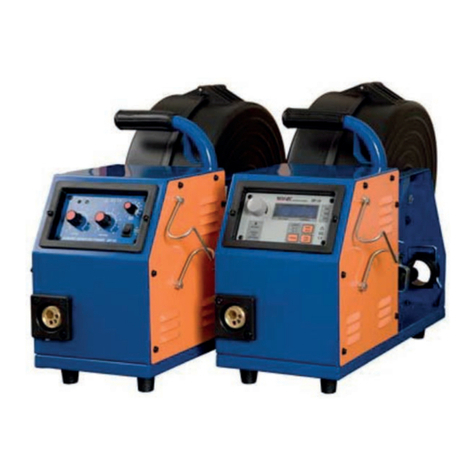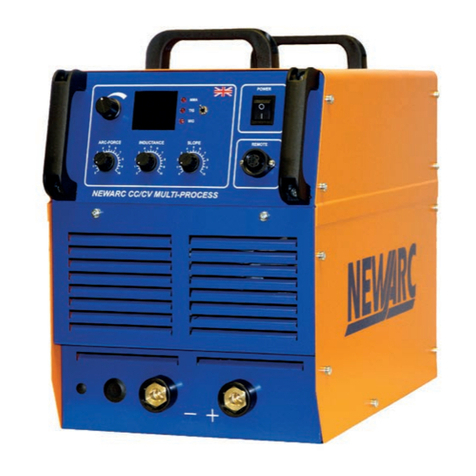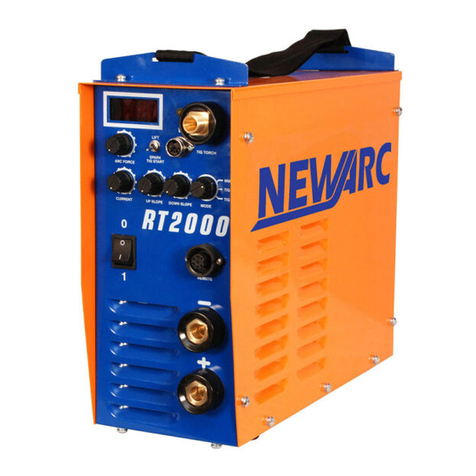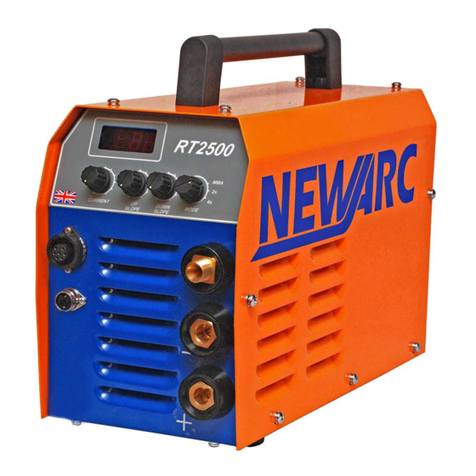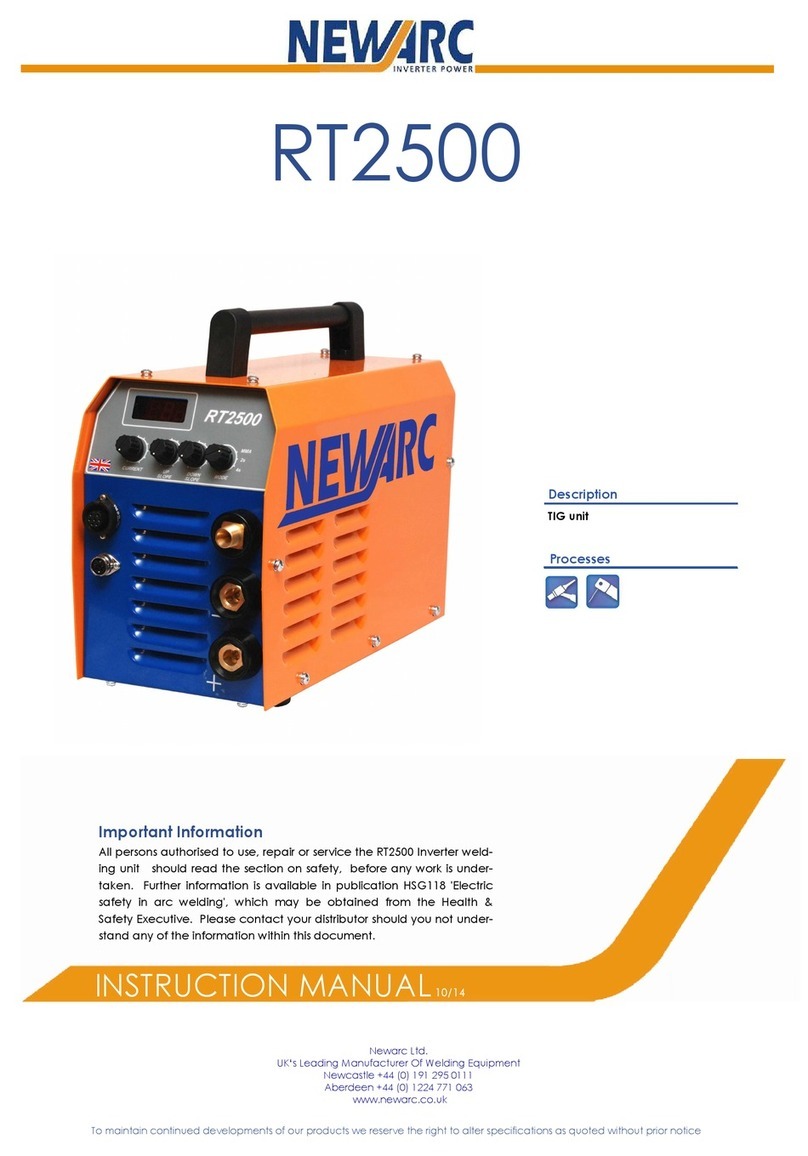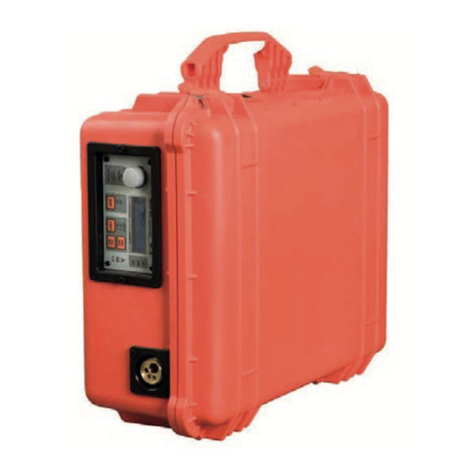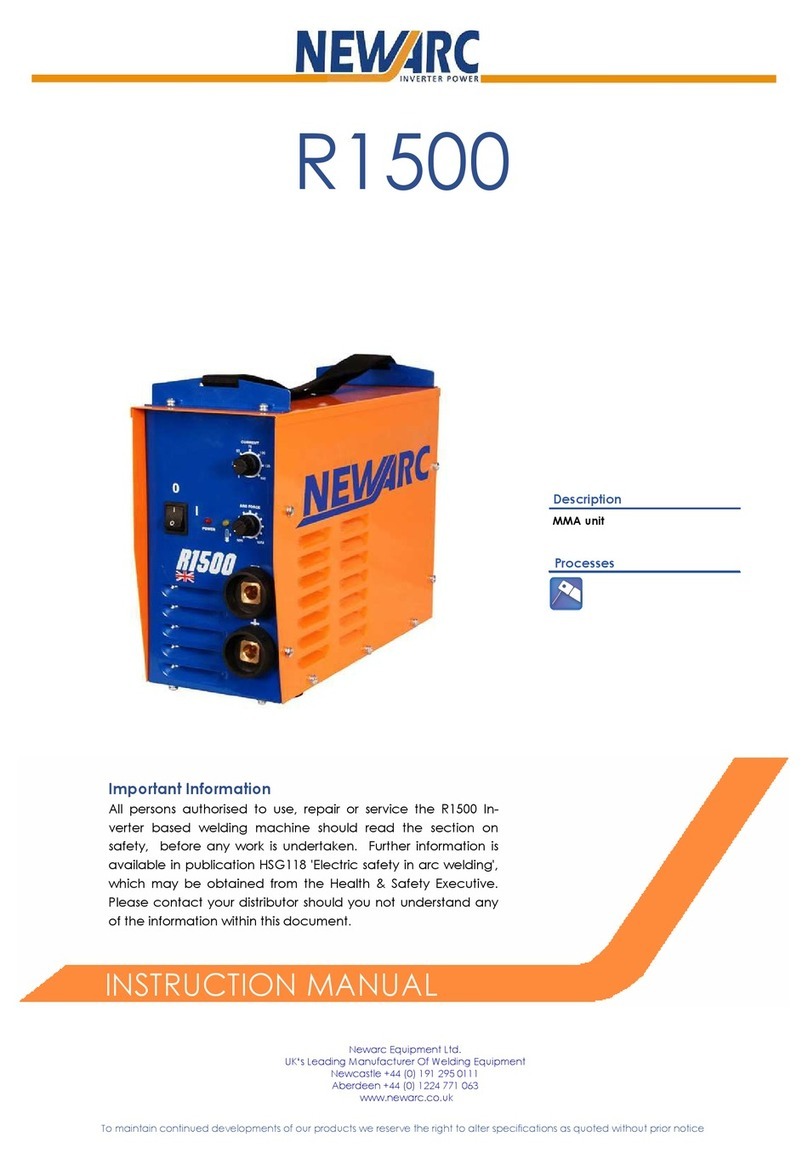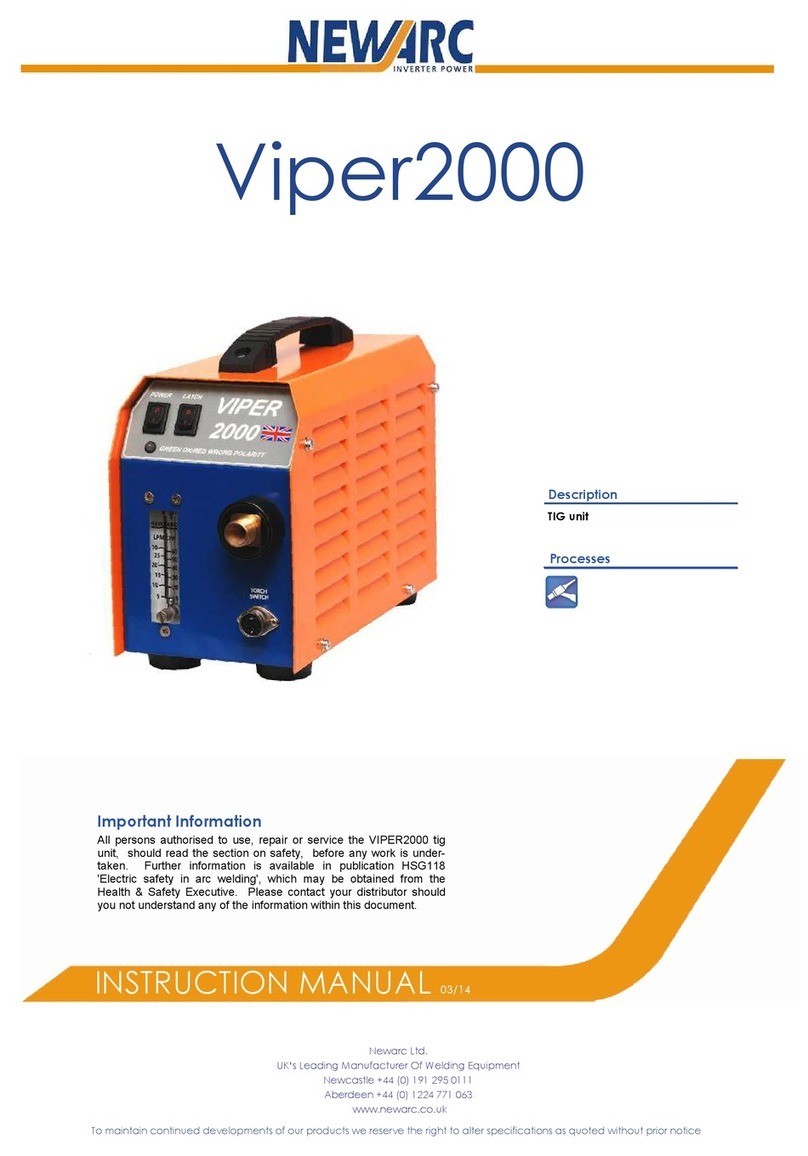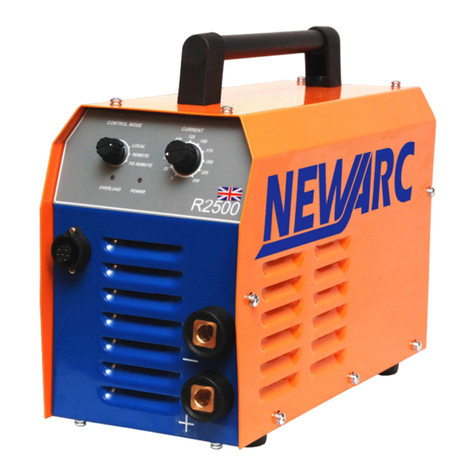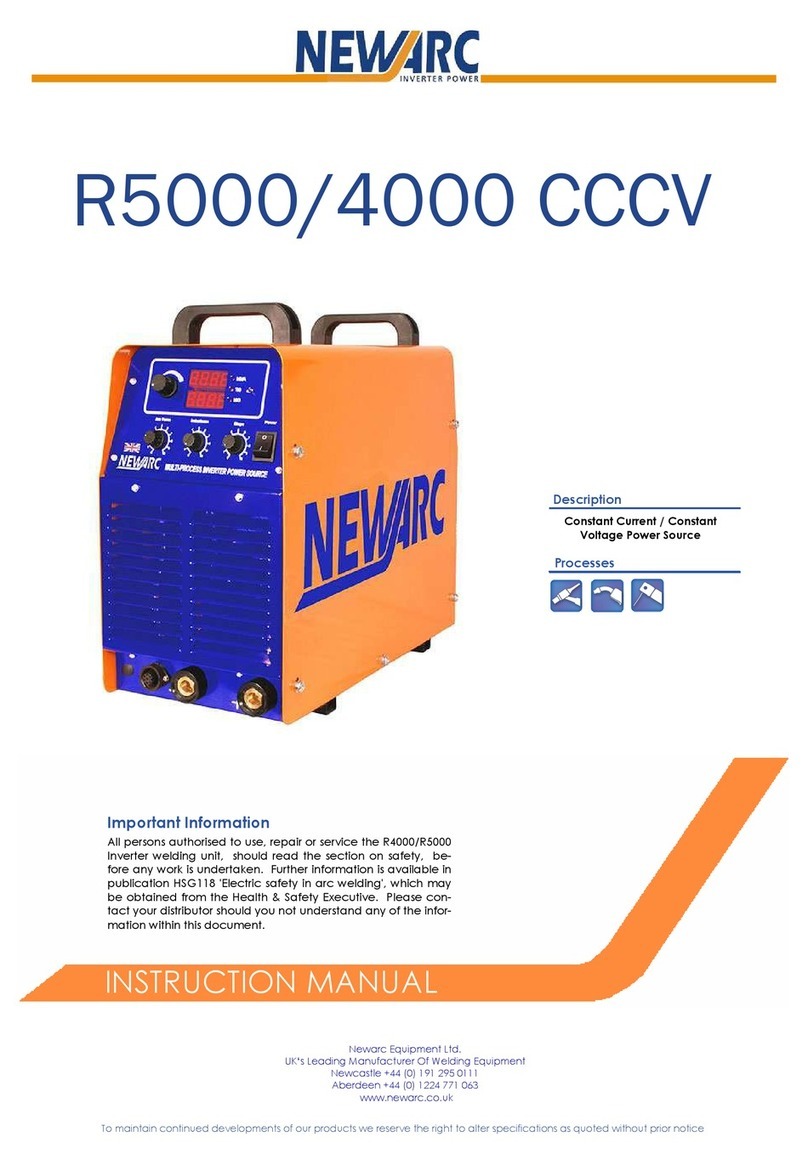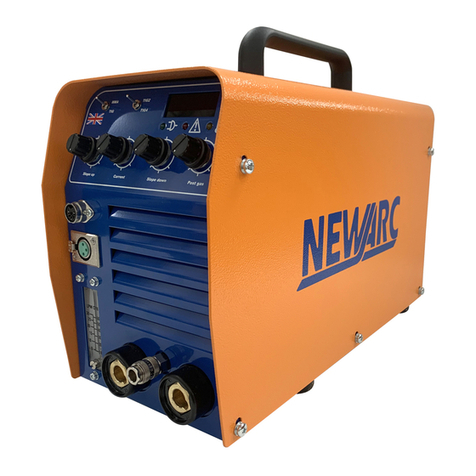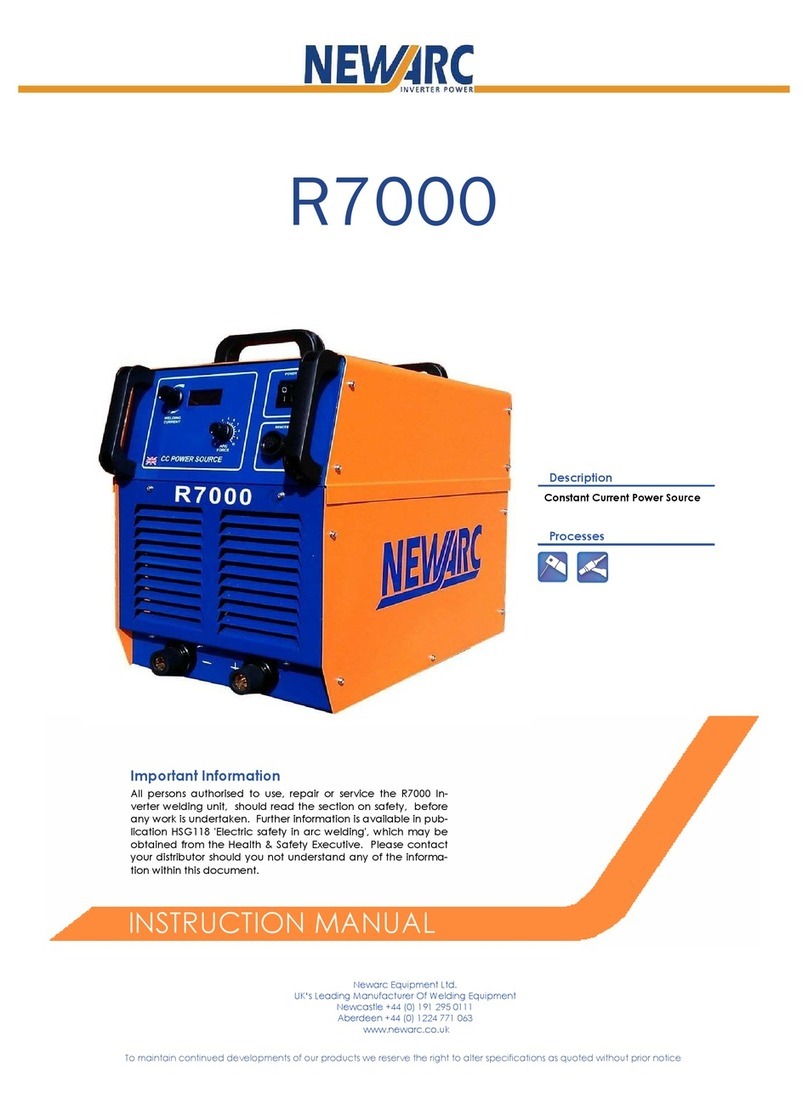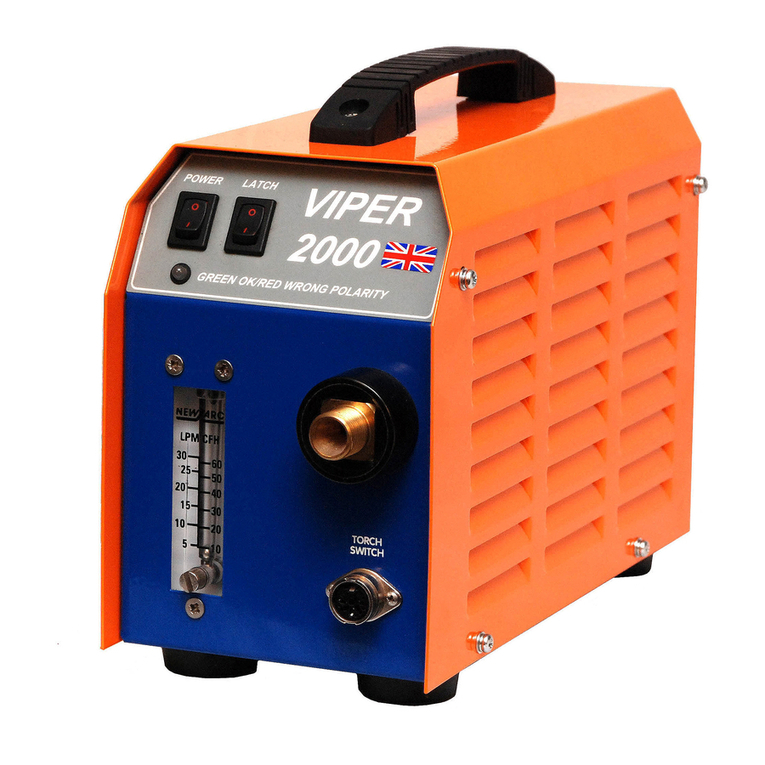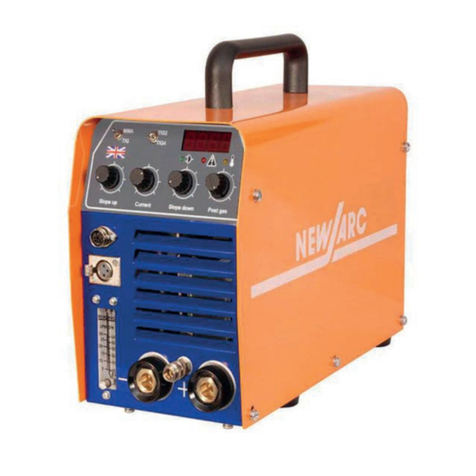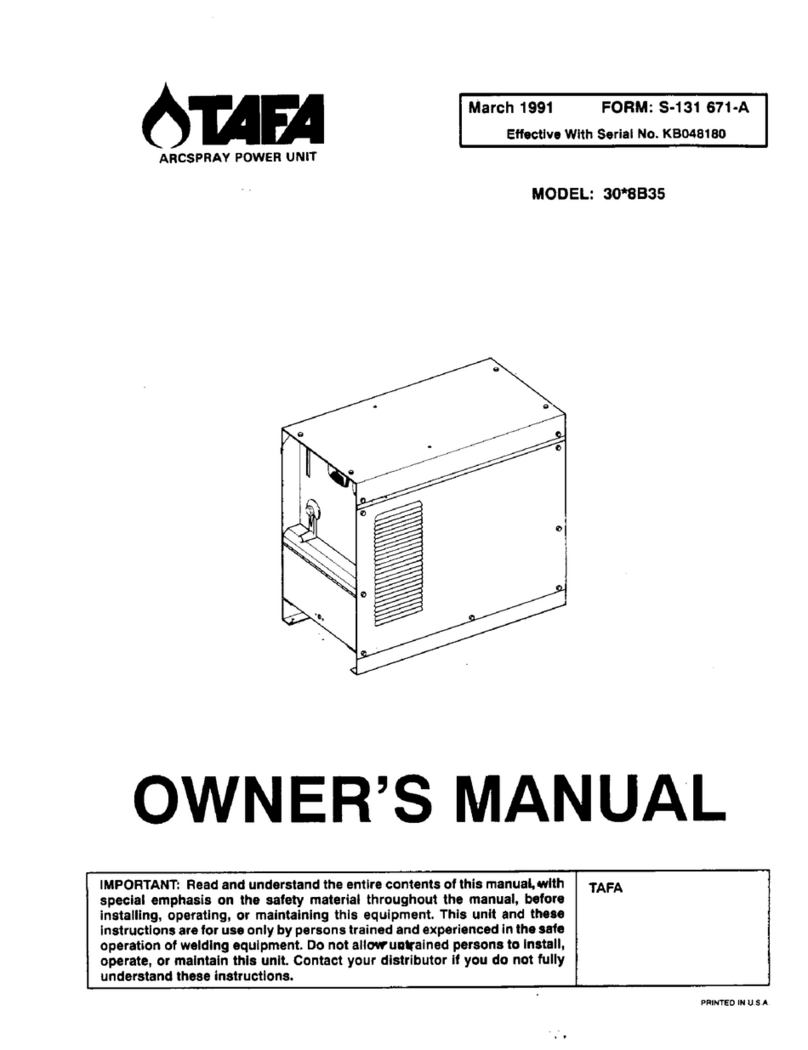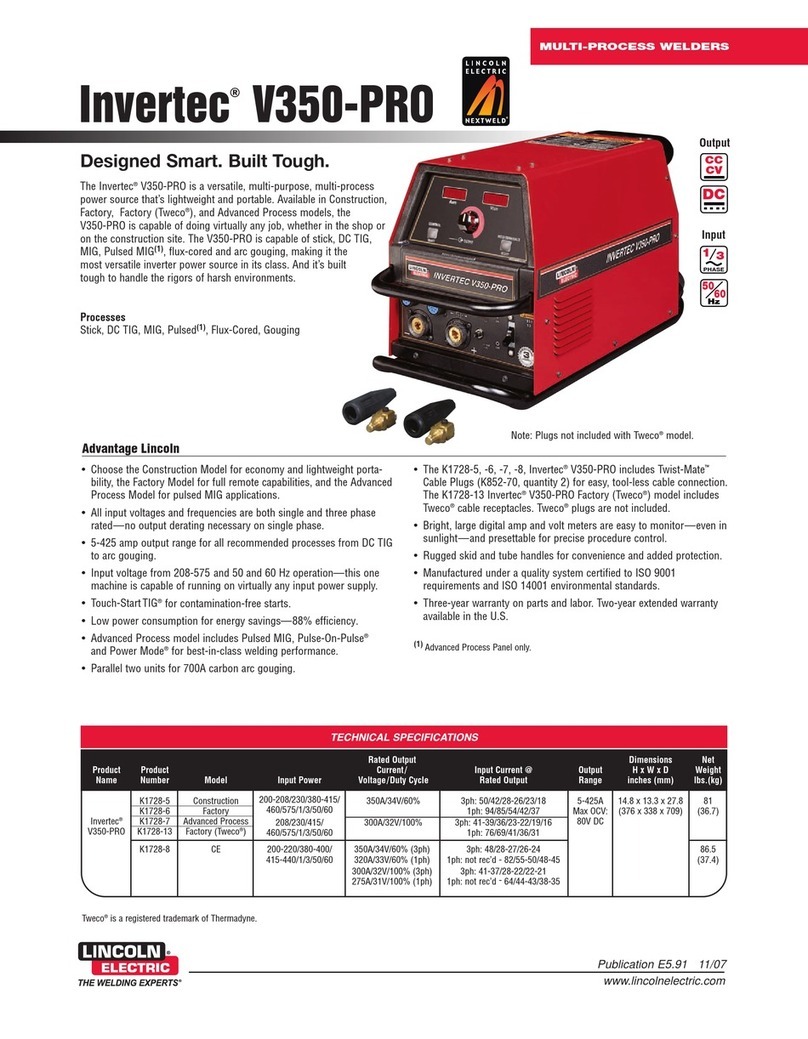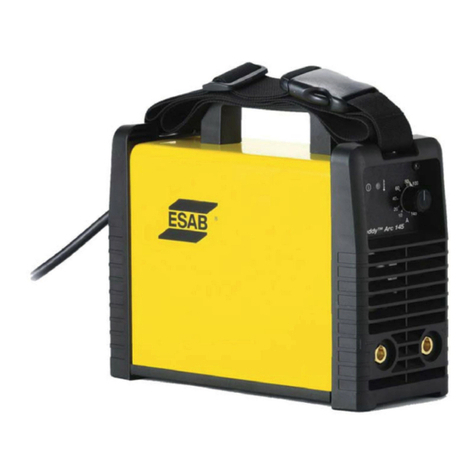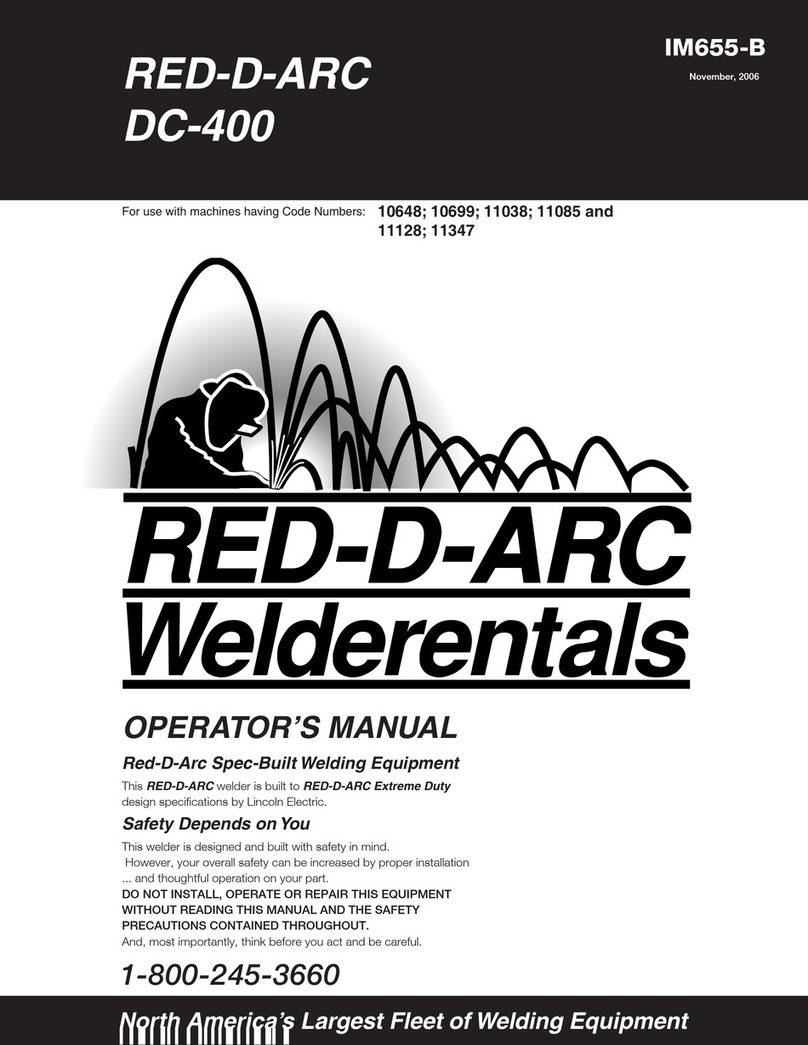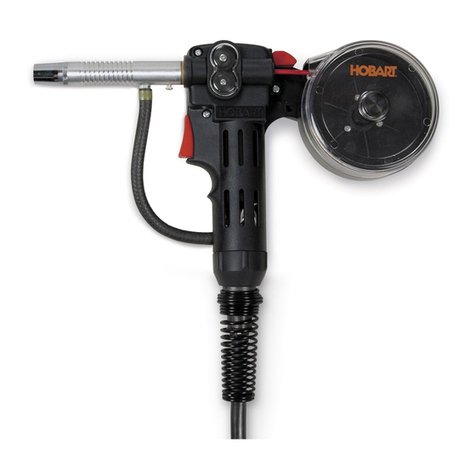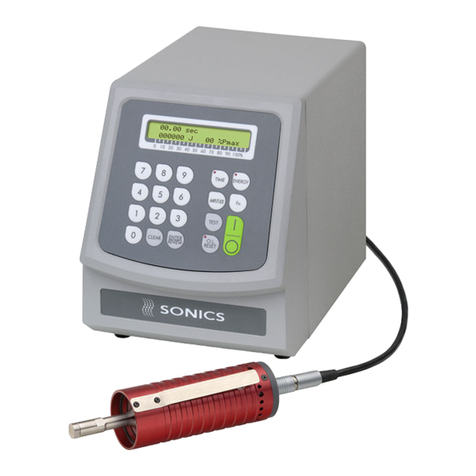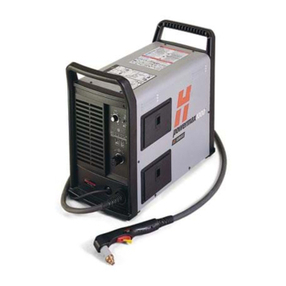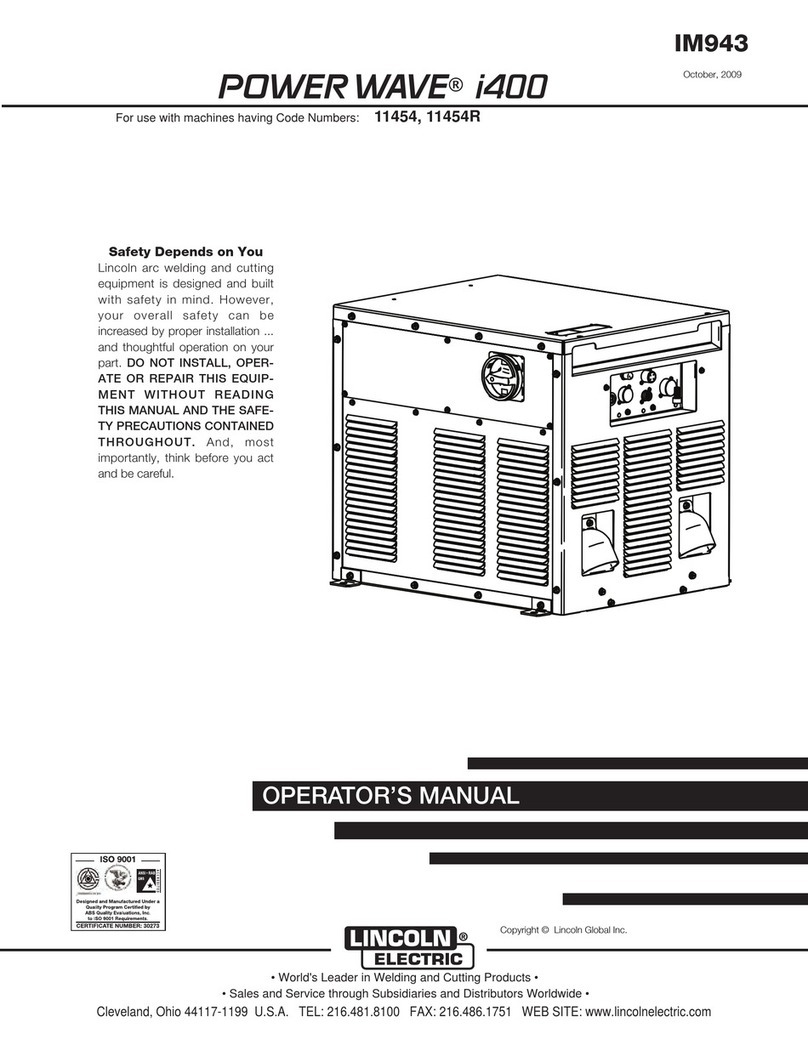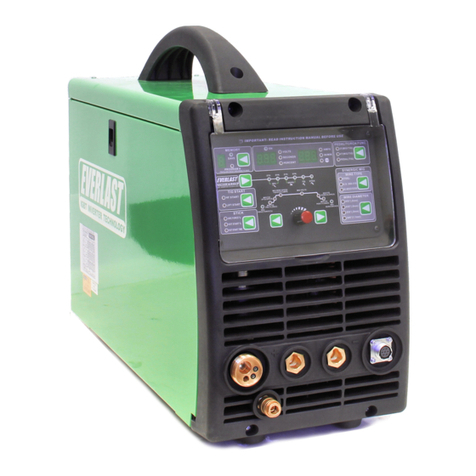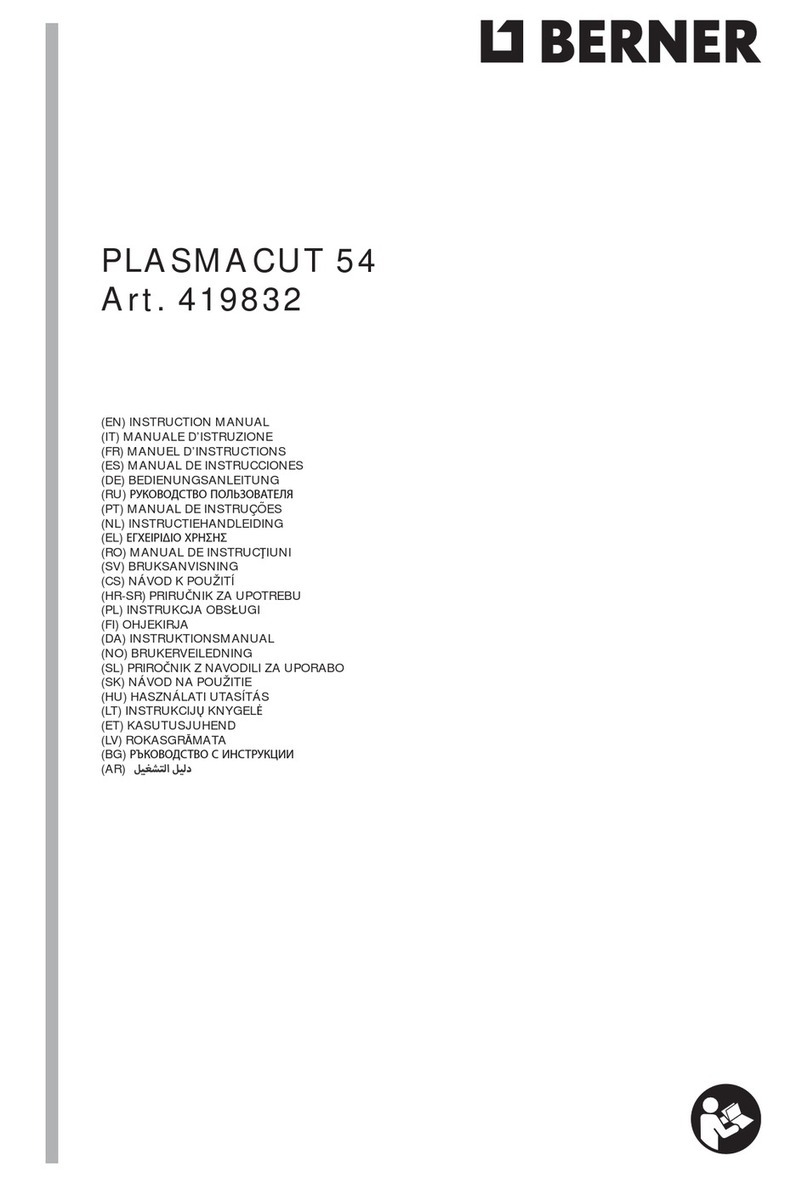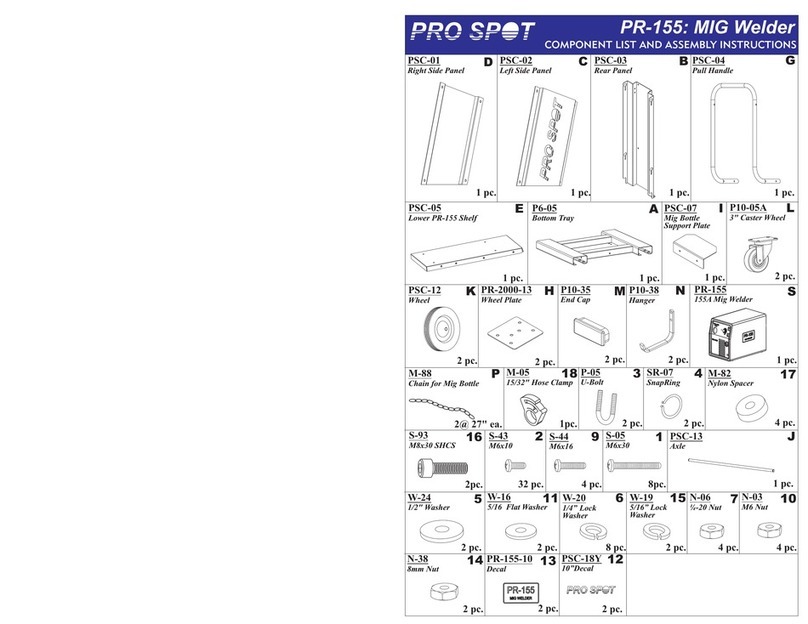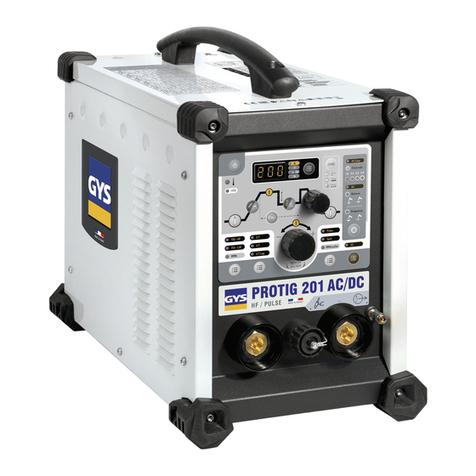
RT2000 Instructions for use Page 5
16/05/2014
4.3 Operation
4.3.1 MMA Welding
For straight polarity welding, connect the
electrode holder to the positive weld terminal
and the earth return lead to the negative weld
terminal. For reverse polarity welding, reverse
these connections.
Turn the mode switch to 'MMA', the machine is
now in MMA mode.
Turn the mains switch to the on position, the
digital display and the overload indicator will
light. After approximately 15 seconds the
overload indicator will extinguish and the
machine is ready to weld.
While reading the digital display, adjust the
current control to the recommended setting for
the size and type of welding electrode to be
used.
When welding, adjust the Arc-force control to
achieve the arc condition you require.
The RT2000 is suitable for welding all types of
electrodes within the current rating of the
machine, normally up to 3.2 or 4mm depending
on the type of rod..
The RT2000 should never be used with arc-air
gouging or cutting electrodes.
4.3.2 TIG Welding
Connect a hose suitable for use with pure Argon
at a pressure of up to 10 bar (150psi) between
the regulator on the gas cylinder and the gas in
connection on the rear panel of the machine.
Turn the gas cylinder valve and the regulator on
and adjust the regulator to give a working
pressure between 3 and 5 bar. (see paragraph
2.5 'The safe handling of gas cylinders' in
section 2, General precautions for more
information)
Connect the TIG torch power/gas lead to the
TIG torch power/gas connector and the switch
lead to the torch switch socket.
Connect the earth return lead to the +ve weld
terminal.
Turn the mode switch to '2s' or '4s'.(see relevant
paragraph in section 4.2 Description of controls
for more information on the setting of this
control).
Turn the Up slope and Down slope controls to
the settings required. (see relevant paragraph in
section 4.2 Description of controls for more
information on the setting of this control)
Turn the on/off switch to the on position, the
digital display and the overload indicator will
light up. After approximately 15 seconds the
overload indicator will extinguish and the
machine is ready to weld.
While reading the digital display, adjust the
current control to the required setting for the
work being undertaken.
5. Fault finding and
Maintenance
5.1 Machine operation
Most problems with the operation of the RT2000 can
be overcome by following the procedures below.
No digital display on switch on.
Check that the machine is attached to a working
mains supply that it is correctly plugged in and
any isolator switches are turned on.
Have a competent electrician check that there
are no fuses or overload devices interrupted,
that the mains plug is fitted correctly and that
there are no loose wires or connections, check
that there are no breaks in the mains cable.
If all the above appear satisfactory have a
competent maintenance engineer check the
fuses inside the machine. The relevant one in
this case is on the TIG control PCB. This PCB is
located at the top left hand side of the machine.
The fuse is located on the bottom of the PCB
towards the rear of the machine. The fuse rating
is 2 amp, quick blow..
Digital display lit but no output on MMA.
Make sure the mode switch is in the MMA
position.
Make sure that the overload indicator goes off
after 15 seconds. If not see paragraph 'thermal
cut-out indicator' below.
If all the above appear satisfactory, have a
competent maintenance engineer check the
fuses inside the machine. The relevant one in
this case is on the Main control PCB. This PCB
is located at the top right hand side of the
machine. The fuse is located on the top of the
PCB halfway along its length.. The fuse rating is
2 amp, quick blow.
Output on MMA but not on TIG.
Check to see if gas flows when the torch switch
is pressed, if not, check that the torch switch
lead is in good condition that there are no
breaks in the cable and the wires in the plug and
torch switch are still securely attached. Check
that the torch switch plug is connected properly.
If gas flow is present, check the machine works
in 'lift TIG' mode to determine whether the
problem is in the TIG welding mode or that just
the HF is not working.
No HF operation.
have a competent maintenance engineer check
the fuse on the HF PCB. This PCB is located in
the 'U' channel on the top of the machine. The
fuse is located near the top of the PCB toward
the front of the machine. The fuse rating is 2
amps, quick blow.
5.2 MMA Welding Problems
If problems with the RT2000s operation while
MMA welding are experienced, first refer to the
information in paragraphs 3.2 in the installation
section, paragraph 4.2.1 in the operating section
and the fault finding procedure earlier in this
section.
Most problems with the MMA welding procedure
are the result of not setting the correct welding
parameters for the welding rod being used.
All welding rod packets have information on them in
symbolic format , giving suitable current range,
polarity and type of weld (normally called 'position').
If you are in doubt about what these symbols mean,
ask your welding rod supplier to explain them.
Choose an initial current setting towards the middle
of the quoted range and if necessary practice on a
piece of waste material the same type and thickness
as the job to be welded.
5.3TIG Welding problems
If problems with the RT2000s operation while
TIG welding are experienced, first refer to the
information in paragraphs 3.2 in the installation
section, paragraph 4.2.2 in the operating section
and the fault finding procedure earlier in this
section.
The common problems with TIG welding are poor
striking, porosity and poor appearance of the weld.
If you are experiencing any problems with TIG
welding follow the check list below, this will cure
most problems :-
If the RT2000 is suffering from poor striking,
check that all power leads are connected
properly, check that there is sufficient gas flow
and that the correct gas is being used, check
that the earth clamp is making a good
connection to the work-piece.
If there is porosity in the weld or the final weld is
of poor appearance, check that there is
sufficient gas flow and that the correct gas is
being used, check the condition of the TIG
torch, particularly the gas hose. Make sure that
the collet or gas lens in the torch head is not
blocked in anyway. Check all gas connections
are secure and that there are no leaks, use a
leak detecting spray on all connections if
necessary.
Any welding problems not covered above must be
brought to the attention of a qualified Welding
Engineer, if the problem still persists have the
RT2000 checked by a trained maintenance person.
Thermal cut-out indicator lit
This indicator must be off for normal operation. If on
it indicates that the RT2000 has overheated and the
power stages of the RT2000 have been shut down
so you will get no current output.
In normal climate conditions (below 25C) the
RT2000 has a 100% duty cycle, so operation of the
thermal cut out indicates that the inside of the
machine is likely choked with dust and therefore not
being cooled properly.
In Hot climates (above 25C) It indicates that you
are exceeding the duty cycle of the RT2000, leave
switched on for a few minutes and the RT2000 will
return to normal operation. In this circumstance, do
not switch the RT2000 off as this will stop the
operation of the cooling fan and greatly extend the
cool down period. Frequent tripping of the thermal
cut-out, especially at low current settings is
indicative that the inside of the machine is probably
choked with dust.
For information about cleaning the dust out of
the RT2000 please refer to the relevant part of
section 5.4.2, the three monthly service
schedules.
Any operating problems not covered above
means the RT2000 must be checked by a trained
New-Arc service engineer or returned to the
factory for repair.
